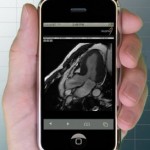Device Linked To Smartphone Helps Diagnose Cancer–A Headline the Likes of Which We Will See More of
Posted on April 10, 2011 by Jeffrey Newman
 In yesterday’s news cycle, a story issued which is a harbinger of technology to come and one of the great benefits of competition between smart phone apps, which has advanced that technology nicely (although the potential is much greater). The story is about a portable device created at the Massachusetts General Hospital which connects to a smartphone and analyzes a small amount of tissue to know within an hour whether the patient’s cancer is malignant and likely to spread. The findings go into a monitor on the mobile phones. A paper on this excellent device was published in the Journal of Science Translational Medicine and it was run on 50 people with abnormal stomach tissue by biopsy. By looking at a combination of four biomarkers the researchers correctly predicted whether 48 of them had benign or malignant cancer. Now I agree that the amazing part of the development is not the connection to the smartphone but the determination of the biomarkers. However, the speed with which this new test can be run on humans is a central part of the whole concept and in any circumstances where speed of diagnosis is critical (most of medicine), this kind of lateral thinking is what we should be seeking. I envision that soon there will be a way to examine blood real time, without invasive needles and that the blood, which is often the earliest warning system of chronic disease, will be our canary in the cave. It will happen, the work is in progress and I am preparing a blog about it for next week. Anyway, I digress. Dr. Cesar Castro, an Oncologist at MGH and one of the authors said he is working on customizing the test for different types of cancers. Clinical trials are upcoming and Castro says that physicians will be able to use the device to see whether a drug is likely to work. If it is not, this will allow for a speedier transition to a more effective drug to try out. The device is inexpensive–$200 inexpensive and as such it could be used in the developing world. It won’t be used to replace existing methods of analyzing cancer but it will enhance those methods. This merger if discipline–new communication technology with medicine is where we need to be. Perhaps there should be a well funded think-tank as the potential is limited only by our imagination.
In yesterday’s news cycle, a story issued which is a harbinger of technology to come and one of the great benefits of competition between smart phone apps, which has advanced that technology nicely (although the potential is much greater). The story is about a portable device created at the Massachusetts General Hospital which connects to a smartphone and analyzes a small amount of tissue to know within an hour whether the patient’s cancer is malignant and likely to spread. The findings go into a monitor on the mobile phones. A paper on this excellent device was published in the Journal of Science Translational Medicine and it was run on 50 people with abnormal stomach tissue by biopsy. By looking at a combination of four biomarkers the researchers correctly predicted whether 48 of them had benign or malignant cancer. Now I agree that the amazing part of the development is not the connection to the smartphone but the determination of the biomarkers. However, the speed with which this new test can be run on humans is a central part of the whole concept and in any circumstances where speed of diagnosis is critical (most of medicine), this kind of lateral thinking is what we should be seeking. I envision that soon there will be a way to examine blood real time, without invasive needles and that the blood, which is often the earliest warning system of chronic disease, will be our canary in the cave. It will happen, the work is in progress and I am preparing a blog about it for next week. Anyway, I digress. Dr. Cesar Castro, an Oncologist at MGH and one of the authors said he is working on customizing the test for different types of cancers. Clinical trials are upcoming and Castro says that physicians will be able to use the device to see whether a drug is likely to work. If it is not, this will allow for a speedier transition to a more effective drug to try out. The device is inexpensive–$200 inexpensive and as such it could be used in the developing world. It won’t be used to replace existing methods of analyzing cancer but it will enhance those methods. This merger if discipline–new communication technology with medicine is where we need to be. Perhaps there should be a well funded think-tank as the potential is limited only by our imagination.
Comments (1)

Thanks for all of your efforts on this web site. Enjoy the remaining portion of the new year. Your performing a glorious job! =)